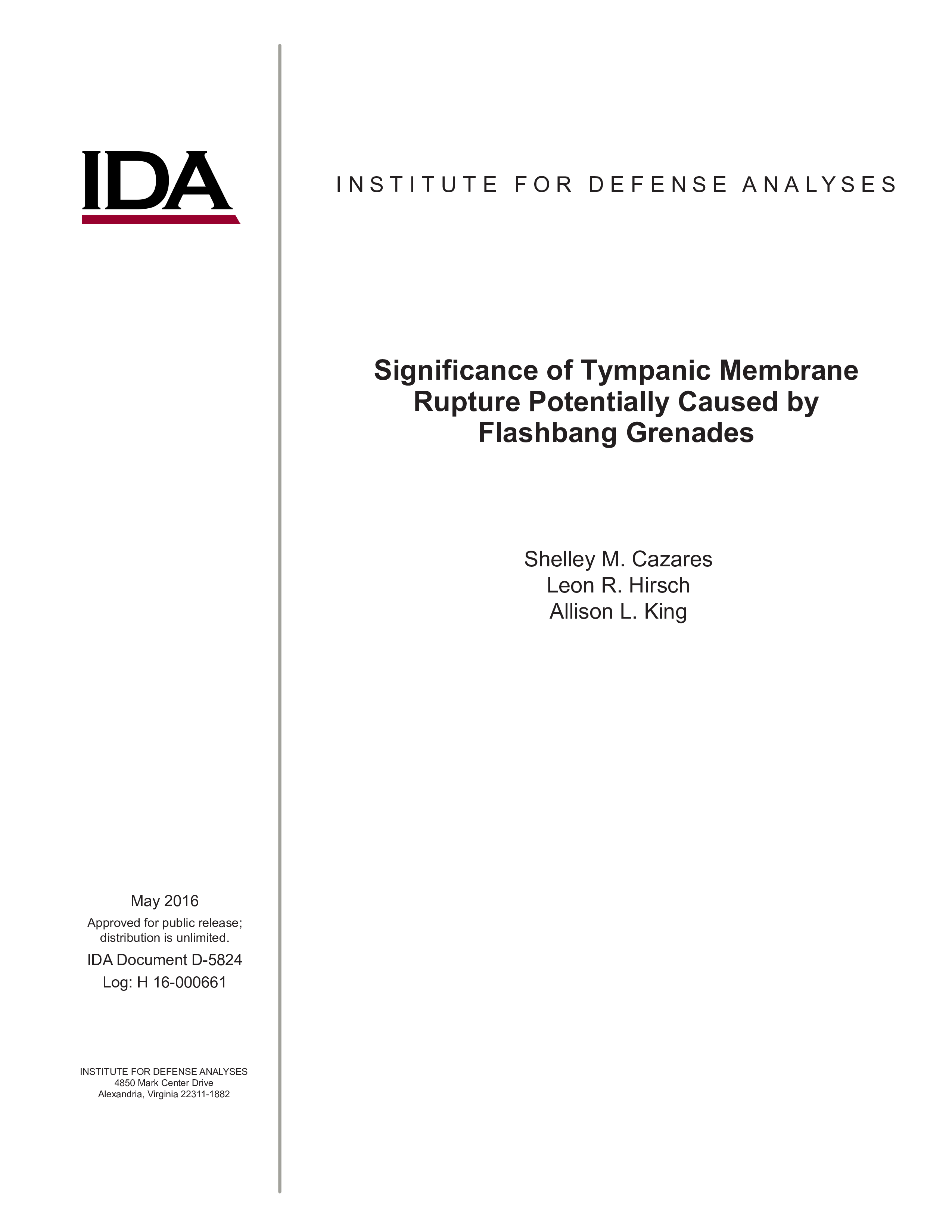Significance of Tympanic Membrane Rupture Potentially Caused by Flashbang Grenades
May, 2016
IDA document: D-5824
FFRDC: Systems and Analyses Center
Type: Documents
Division: Science and Technology Division,
Science, Systems and Sustainment Division
Authors:
IDA document: D-5824
FFRDC: Systems and Analyses Center
Type: Documents
Division: Science and Technology Division
Authors:
Authors
Shelley M. Cazares, Leon R. Hirsch, Allison L. King
See more authors

